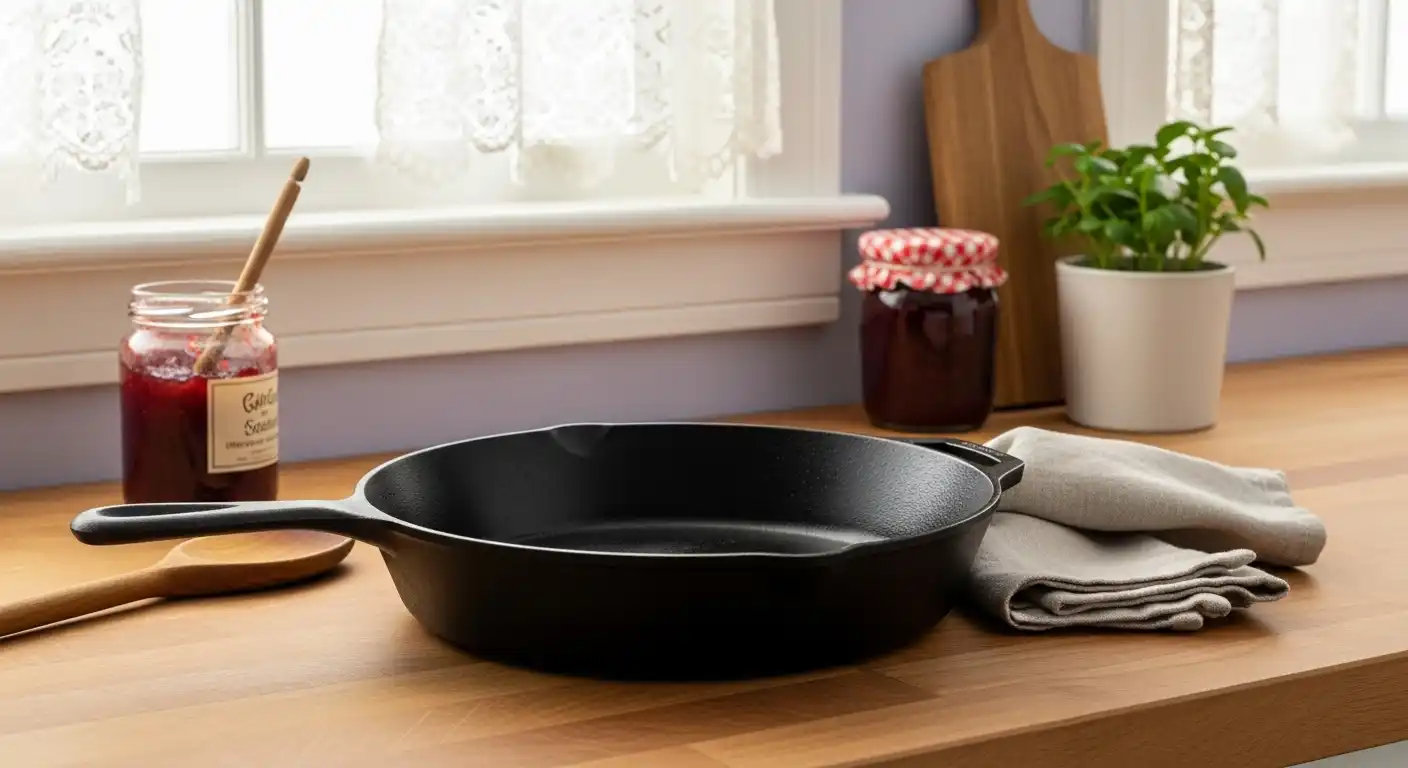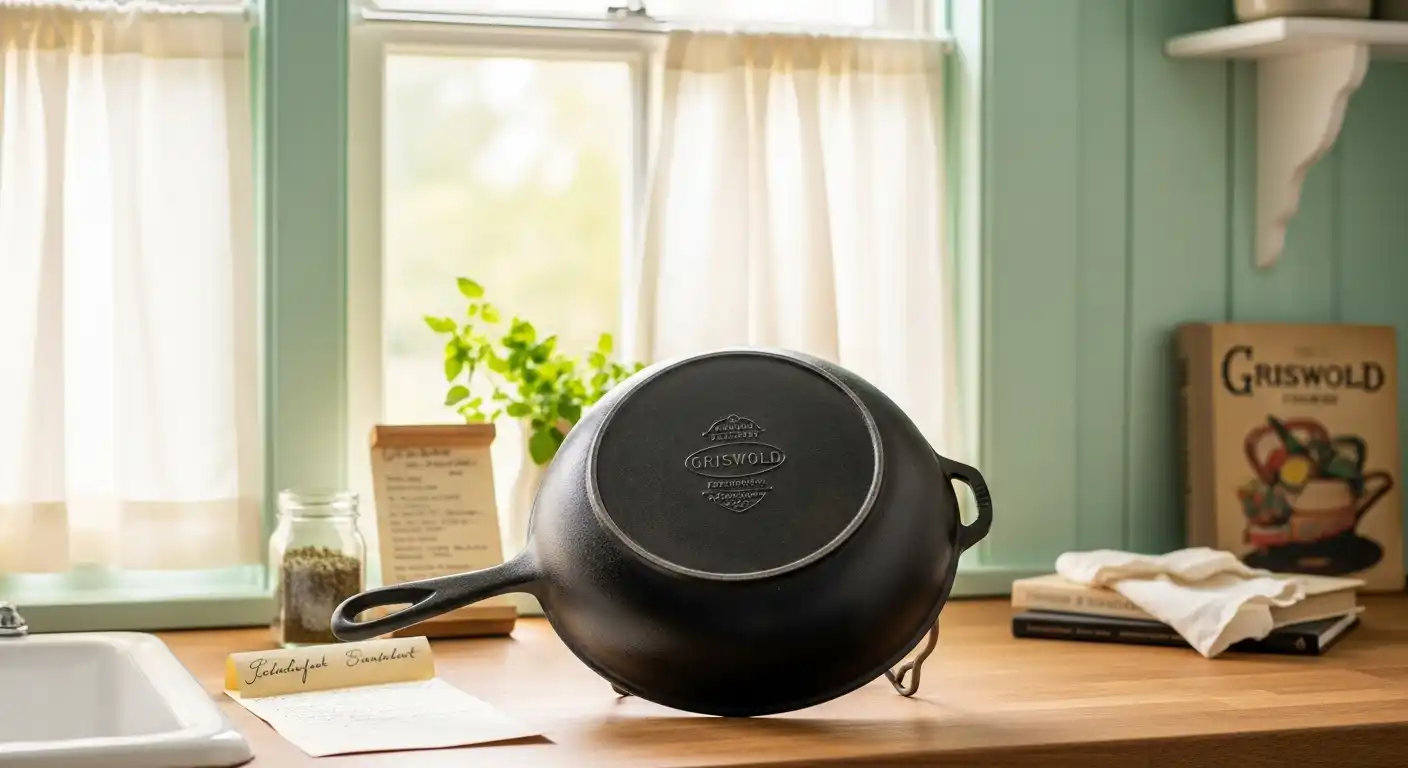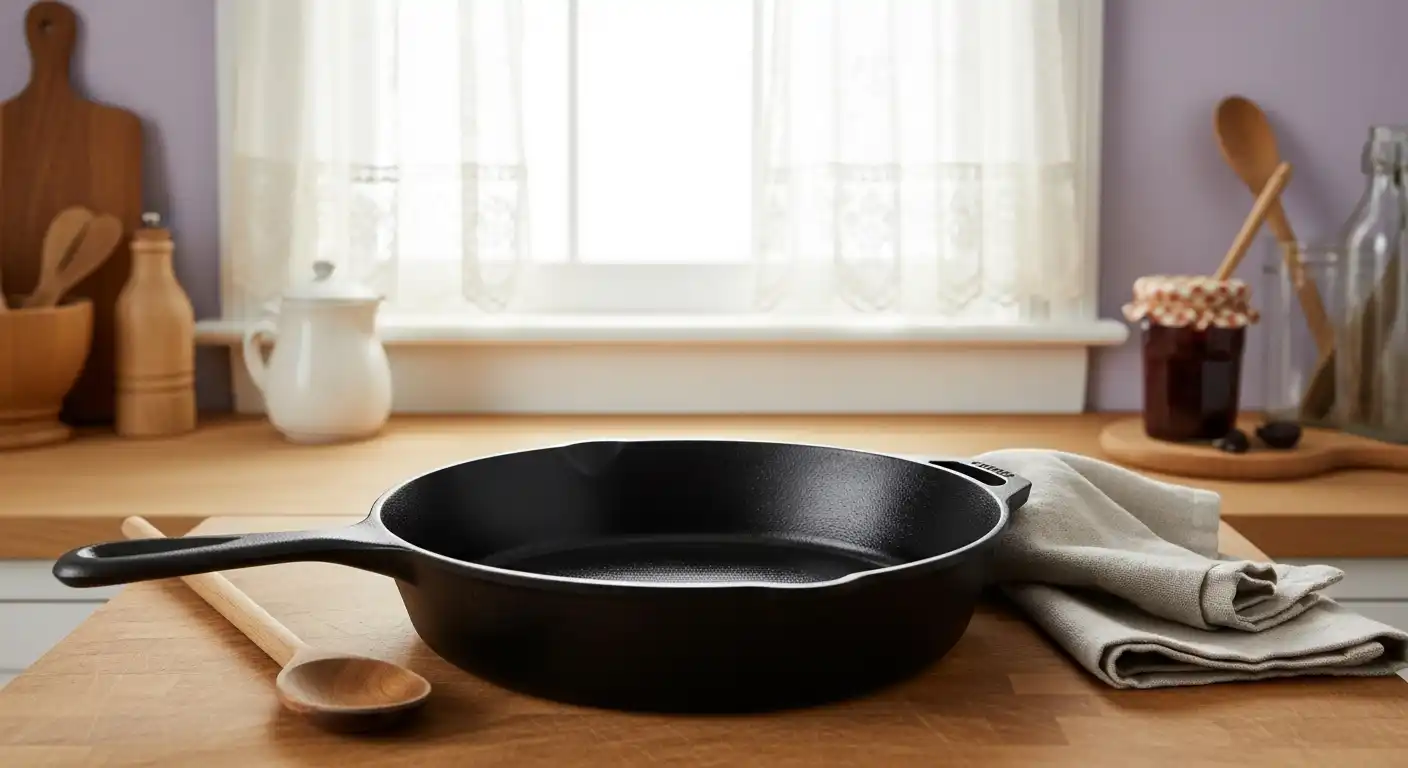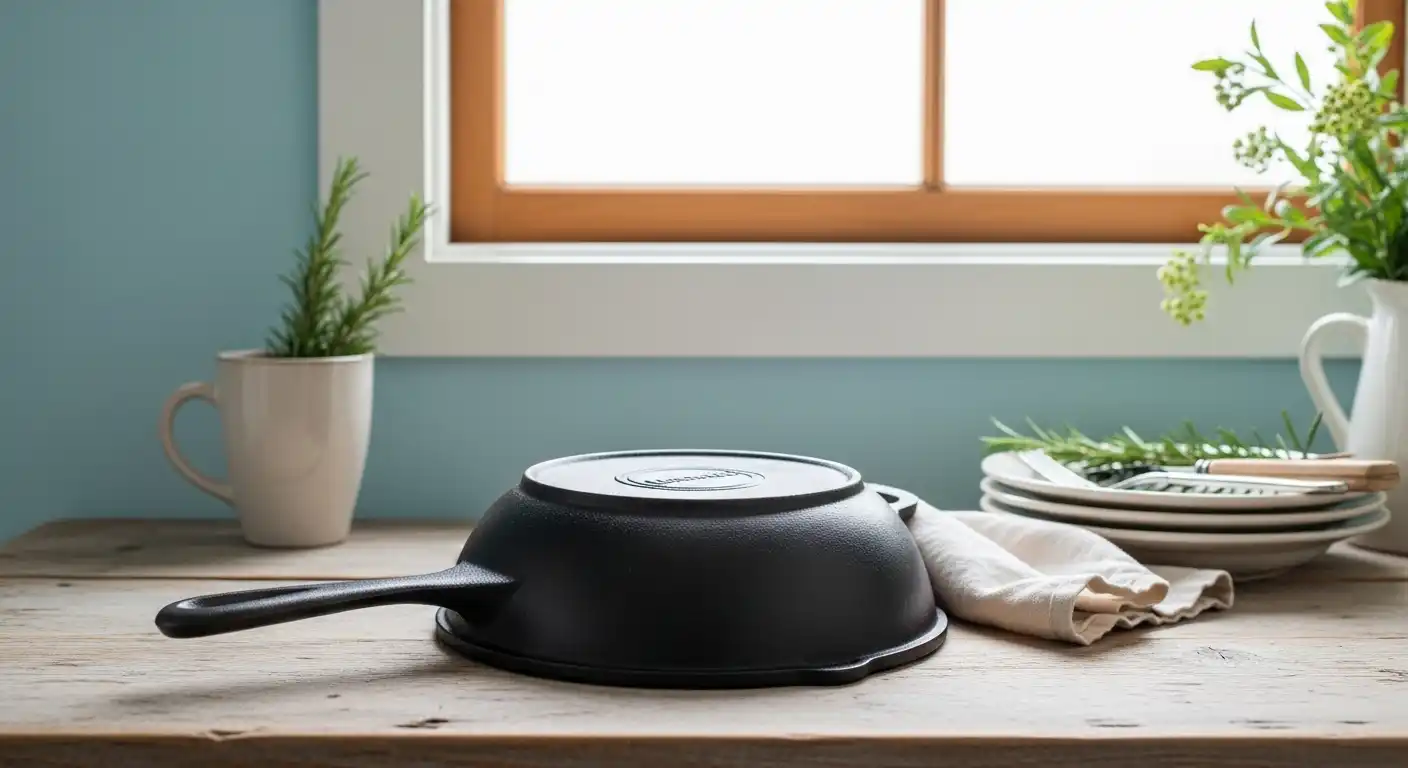How To Tell How Old Is A Cast Iron Skillet? 9 Methods!
Cast iron skillets are timeless treasures in the kitchen, cherished for their durability and unmatched cooking performance.
But how old is that trusty skillet you found at a flea market or inherited from your grandmother? Determining the age of a cast iron skillet can be a fascinating journey, revealing its history and value.

You can tell how old a cast iron skillet is by examining its maker’s mark, mold number, handle design, and surface texture. Key indicators include the presence of a heat ring, lack of pour spouts, and logo style, with older skillets typically showing rougher casting and simpler markings.
In this guide, we’ll explore nine reliable methods to help you uncover the age of your cast iron skillet, blending detective work with a love for vintage cookware.
🎄 Christmas & Year-End Amazon Deals !
Don’t miss out on the best discounts and top-rated products available right now!
*As an Amazon Associate, I earn from qualifying purchases.
1. Check for Manufacturer Markings
Most cast iron skillets bear markings on the bottom, such as a brand name, logo, or city of manufacture. These markings are your first clue.

For example, Griswold skillets often feature a distinctive cross-in-circle logo, while Wagner Ware includes a stylized “Wagner” script.
Researching these markings can pinpoint a production era, as manufacturers like Lodge, Griswold, and Wagner changed their logos over time.
If you’re new to cast iron, learning how to use a pre-seasoned cast iron skillet for the first time can help you appreciate its unique qualities while you investigate its age.
2. Examine the Casting Marks
Older cast iron skillets often have distinct casting marks from the sand-casting process used in early manufacturing.
Look for rough textures, small imperfections, or raised numbers on the skillet’s bottom.
These numbers, often indicating size (e.g., “8” for an 8-inch skillet), can hint at age, as modern skillets tend to have smoother finishes.
Hand-cast skillets from the late 1800s to early 1900s may show irregularities, while post-1960 skillets from brands like Lodge are typically machine-cast with cleaner lines.
Understanding these differences can narrow down the timeline.
3. Look for a “Made in USA” Label
If your skillet has a “Made in USA” marking, it likely dates after the 1890s, when U.S. manufacturers began adding this label due to import regulations.
Skillets without this marking could be older or imported, though most vintage American cast iron was domestically produced.
For example, early Griswold pieces from Erie, Pennsylvania, may lack this label, suggesting they predate the 1900s.
Knowing this can also guide you in caring for your skillet, especially if you’re wondering how to clean a cast iron wok or skillet to preserve its patina.
4. Analyze the Handle Design
The handle’s shape and attachment can reveal a skillet’s age.
🎄 Christmas & Year-End Amazon Deals !
Don’t miss out on the best discounts and top-rated products available right now!
*As an Amazon Associate, I earn from qualifying purchases.
Older skillets often have a raised “rib” or reinforced handle, while newer ones may feature flat, integrated handles.

For instance, early Wagner skillets (pre-1920s) have a pronounced ridge, while modern Lodge skillets have sleeker, smoother handles.
Inspecting the handle’s craftsmanship can also indicate whether it was hand-finished or machine-molded.
This method pairs well with checking for wear, which we’ll cover next.
5. Assess Wear and Patina
A well-seasoned cast iron skillet develops a glossy, black patina over years of use.
Heavy wear, such as pitting or a thin, uneven seasoning layer, suggests significant age or heavy use.

Conversely, a pristine skillet might be newer or meticulously maintained.
If you’re unsure about the black residue on your skillet, check out is black residue on cast iron skillet harmful? to learn how to identify safe seasoning versus damage.
A skillet’s patina can tell its story, so examine it closely.
6. Identify Production Techniques
Cast iron manufacturing evolved over time, and these changes can help date your skillet.
Pre-1900 skillets were often hand-poured, resulting in thicker, heavier pans with visible seams or sprue marks (small nubs from casting).
By the mid-20th century, automated casting produced thinner, lighter skillets.
🎄 Christmas & Year-End Amazon Deals !
Don’t miss out on the best discounts and top-rated products available right now!
*As an Amazon Associate, I earn from qualifying purchases.
For example, Lodge transitioned to automated processes in the 1950s, so a lightweight Lodge skillet likely dates post-1950.
If you’re curious about modern uses, see can you use a cast iron skillet on a Blackstone griddle? for versatile cooking tips.
7. Research Catalog Numbers
Some skillets have catalog or pattern numbers etched on them, often near the brand logo. These numbers correspond to specific production runs or designs.
By cross-referencing these numbers with collector guides or online databases, you can estimate the skillet’s manufacturing period.
Griswold and Wagner collectors often maintain detailed records of catalog numbers.
This method requires some research but can be highly accurate for pinpointing your skillet’s age.
8. Check for Heat Rings
A heat ring is a raised circular ridge on the bottom of many vintage skillets, designed to elevate the pan on old wood or coal stoves.

Skillets with heat rings are typically older, pre-dating the 1960s, when electric and gas stoves became common, and heat rings were phased out.
Lodge skillets, for instance, had heat rings until the mid-20th century.
If your skillet lacks a heat ring, it’s likely from the 1960s or later.
This clue is especially useful when combined with other methods, like examining markings.
9. Consult Collectors or Experts
If you’re still unsure how to tell how old is a cast iron skillet, consult collectors or experts.
🎄 Christmas & Year-End Amazon Deals !
Don’t miss out on the best discounts and top-rated products available right now!
*As an Amazon Associate, I earn from qualifying purchases.
Online forums, such as the Griswold & Cast Iron Cookware Association, or local antique dealers can offer insights based on your skillet’s features.
Bring clear photos of markings, handles, and any unique traits.
Experts can also advise on maintenance, like seasoning a cast iron Dutch oven to keep your vintage skillet in top shape.
Their knowledge can confirm your findings or reveal hidden details.
Why Knowing Your Sk LEGAL skillet’s Age Matters
Understanding your skillet’s age adds to its charm and helps you care for it properly.
Vintage skillets may require gentler cleaning to preserve their seasoning, while newer ones can handle more robust use, like cooking on a glass-top stove.
Age can also affect value. A rare 19th-century Griswold might be worth hundreds, while a modern Lodge is more affordable.
Curious about costs? Check how much does a good cast iron skillet cost? for insights.
Tips for Maintaining Your Cast Iron Skillet
Once you’ve dated your skillet, proper care ensures it lasts for generations.
Avoid soaking it in water or using harsh detergents, as these can strip the seasoning. Instead, clean it with a mild scrub and re-season as needed.
Wondering about storage? Learn how to store food in cast iron cookware to keep your skillet safe.
If you’re replacing an old skillet, see how often to replace a cast iron skillet for guidance.
🎄 Christmas & Year-End Amazon Deals !
Don’t miss out on the best discounts and top-rated products available right now!
*As an Amazon Associate, I earn from qualifying purchases.
Common Mistakes to Avoid
When dating your skillet, avoid assuming all unmarked pans are old—some modern brands skip markings.
Also, don’t confuse wear with age; a heavily used newer skillet can look ancient.
Always cross-check multiple methods for accuracy.
If you’re exploring alternatives, check what can you use instead of a cast iron skillet? for options that suit your cooking style.
Final Thoughts
Determining the age of your cast iron skillet is like solving a culinary mystery.
By examining markings, handles, patina, and more, you can uncover its history and deepen your appreciation for this kitchen heirloom.
Whether it’s a century-old Griswold or a modern Lodge, each skillet has a story to tell.
Ready to put your skillet to use? Try it in the oven (can your cast iron skillet go in the oven?) or reduce smoke with tips from how to reduce smoke when cooking with cast iron.
Happy cooking and sleuthing!
